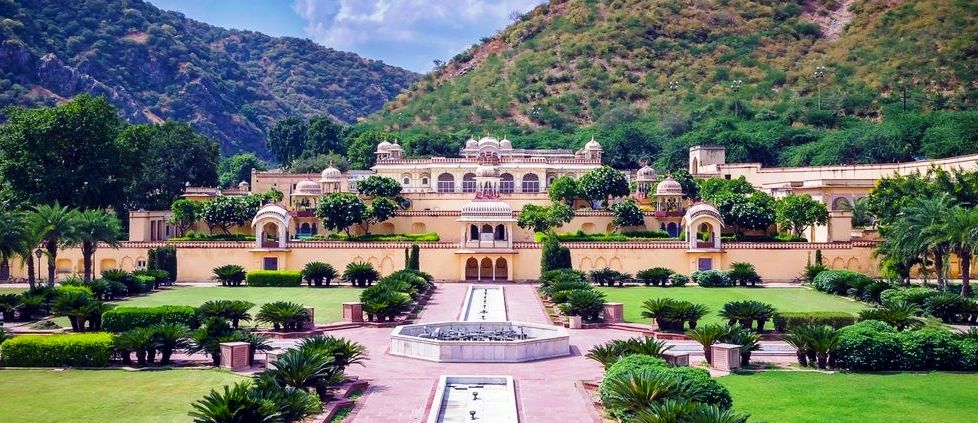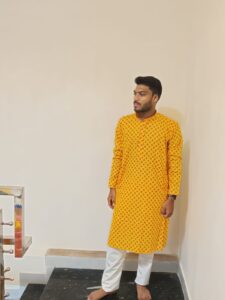Sisodiya Rani Bagh is a lovely royal garden a few kilometers from Jaipur city. It was constructed in 1728 by Maharaja Sawai Jai Singh II for his queen, who was a member of the Sisodia Rajput family of Udaipur. The Sisodiya garden Jaipur is a serene spot with green grass, running fountains, colorful flowers, and wall paintings depicting scenes of Hindu mythology.
There is a small palace within the garden as well. Hills surround this location, ideal for relaxation, photography, and spending time with nature. It is one of Jaipur’s secrets that most tourists tend to overlook.
History of Sisodiya Rani Bagh Jaipur
Sisodiya Rani Ka Bagh was constructed in 1728 by the Jaipur city founder, Maharaja Sawai Jai Singh II. He constructed this lovely garden for his queen, who belonged to the Sisodia Rajput clan of Udaipur, which was among the most ancient and esteemed royal families of Rajasthan.
The Sisodia rani garden symbolized the love and respect of the king for his queen. It was planned as a tranquil haven where the queen could unwind and spend time away from the hectic pace of life in the palace. The garden also provided her with a sense of home from her place in Udaipur, a city famous for its palaces and lovely gardens.
The garden walls are ornamented with paintings of Lord Krishna and Radha depicting the theme of love and devotion. Through the years, the garden has been a serene and lovely place reminding us of the royal way of life and romance of Rajasthan’s bygone era.
Architecture of Sisodiya Rani Bagh Jaipur
Sisodiya Rani Bagh’s architecture is a combination of Rajput and Mughal styles. The garden is constructed on various levels, referred to as terraces, and every level comprises lovely lawns, fountains, and flowerbeds. Water travels between levels through tiny channels, which keeps the garden cool and fresh.
In the middle of the garden is a small palace with chhatris (domes), arches, and balconies. The palace has colorful paintings on the pillars and walls depicting the tale of Lord Krishna and Radha.
The sisodia rani garden is planned in the way that it remains cooler and quieter than the outside space. The serene atmosphere, greenery around, and aesthetic planning make it an excellent representation of royal beauty and luxury. All the plants and pathways in the garden were planned with care so as to provide a peaceful place for the queen.
Sisodia Rani Ka Bagh Entry Fees
The Sisodia Rani ka Bagh entry fees is 50 Rs for Indians.
The Sisodiya Rani Bagh ticket price is 20 Rs for Indian students.
The Sisodiya Rani Bagh ticket price is 200 Rs for foreigners and 100 Rs for foreign students.
Sisodiya Rani Bagh Timings
The Sisodia Rani ka Bagh timings are from 9:00 to 6:00 P.M.
Best Time to Visit Sisodia Rani ka Bagh
The best time to visit Sisodiya Rani Ka Bagh Jaipur is from October to March, when the weather is cool. The weather in Jaipur is lovely and ideal for strolling in the garden, admiring the flowers, and taking stunning photos.
If you enjoy nature and greenery, then July to September (monsoon season) is also a good period. The garden appears fresh and green after rains, and the fountains and watercourses are full and running.
How to Reach Sisodiya Rani ka Bagh
Sisodiya Rani Ka Bagh is located around 6–11 km from Jaipur city center, on the Jaipur–Agra Road (Ghat Ki Guni). You can easily reach here by auto-rickshaw, taxi, or private vehicle.
Conclusion
Sisodiya Rani Ka Bagh Jaipur is a hidden gem that wonderfully depicts royal affection, nature, and art. With its serene gardens, vibrant wall paintings, meandering fountains, and picturesque surroundings, it provides a perfect respite from the city bustle. Whether you are a history lover, a nature enthusiast, or an amateur photographer, this garden is an absolute must-visit destination that preserves the charm and elegance of Rajasthan’s royal history.
Near By Attraction
Jaigarh Fort – Jaigarh Fort, built in 1726 by Maharaja Sawai Jai Singh II, is located on the Aravalli hills near Jaipur. Constructed primarily as a military fortification, it was designed to protect the nearby Amer Fort and the city of Jaipur.
Nahargarh Fort – Perched on the rugged ridges of the Aravalli Hills, overlooking the city of Jaipur, Nahargarh Fort is one of the most remarkable historical monuments in Rajasthan. Alongside Amber and Jaigarh Fort, Nahargarh once formed a crucial defence ring for the Pink City
Jal Mahal – Jal Mahal, located in the heart of Jaipur, is one of the city’s most recognizable attractions, known for its floating beauty and unique architectural design.
City Palace Jaipur – The City Palace Jaipur, located in the heart of Jaipur, is a stunning blend of Rajput, Mughal, and European architecture. Built by Maharaja Sawai Jai Singh II in the 18th century, it served as the royal residence of the Kachwaha Rajput rulers.
Hawa Mahal Jaipur – Located in the heart of Jaipur’s bustling streets, Hawa Mahal is one of India’s most recognizable and photographed monuments. Its pink sandstone facade, intricately designed with latticework and small windows, rises like a crown on the skyline of Jaipur.
Albert Hall Museum Jaipur – The Albert Hall Museum Jaipur is Rajasthan’s oldest museum, showcasing a rich collection of artifacts, including an Egyptian mummy, miniature paintings, and antique weapons.
Amber Fort – Amber Fort, a magnificent Rajput-era fortress in Jaipur, showcases stunning architecture, intricate mirror work, and grand courtyards. Overlooking Maota Lake, this UNESCO World Heritage Site offers breathtaking views, rich history, and a mesmerizing Light and Sound Show.



